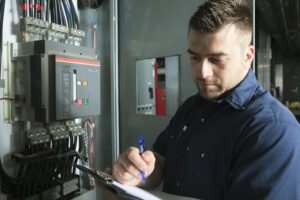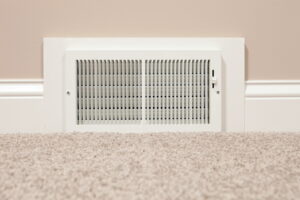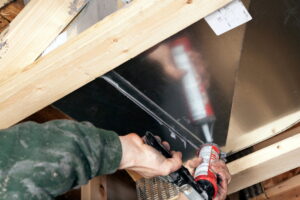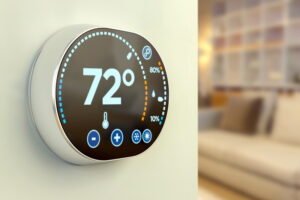 Short-cycling can be as ominous of a phrase as it sounds. Unfortunately, it’s also a relatively common malfunction within HVAC systems. That is, if the system was not properly installed to begin with, or if you don’t have it professionally maintained on a regular basis.
Short-cycling can be as ominous of a phrase as it sounds. Unfortunately, it’s also a relatively common malfunction within HVAC systems. That is, if the system was not properly installed to begin with, or if you don’t have it professionally maintained on a regular basis.
To give you a short description of what short-cycling is, it’s when the compressor of your air conditioning system turns on and off in rapid succession–to quickly to actually finish a cooling cycle, and too fast for your air conditioner to effectively manage. Keep reading to learn more.

 If you’ve read our blog for even just a season, then you probably have seen us talk about maintenance, also called tune-ups, before. Regular, preventive maintenance is vital for your heating and cooling systems in the fall and the spring, respectively. These are the ideal times for HVAC maintenance because it’s right before you need your systems the most.
If you’ve read our blog for even just a season, then you probably have seen us talk about maintenance, also called tune-ups, before. Regular, preventive maintenance is vital for your heating and cooling systems in the fall and the spring, respectively. These are the ideal times for HVAC maintenance because it’s right before you need your systems the most. Whether you are an office manager or the property manager of a commercial space, server room cooling may apply to you. When people think about commercial HVAC and refrigeration, they often think of the air conditioners up on the roof, or in a food service establishment, they might consider commercial refrigerators and coolers. Server room cooling is a very important part of our commercial services, though.
Whether you are an office manager or the property manager of a commercial space, server room cooling may apply to you. When people think about commercial HVAC and refrigeration, they often think of the air conditioners up on the roof, or in a food service establishment, they might consider commercial refrigerators and coolers. Server room cooling is a very important part of our commercial services, though. When it comes time to install a new air conditioner, it can be hard to determine what the right choice is. After all, there are so many options on the market today. If you’ve always had a traditional central air conditioner, an easy choice could be to just stick with this model and make a slight upgrade to get a newer one. This might end up being the perfect option for you, but it’s certainly not the only option.
When it comes time to install a new air conditioner, it can be hard to determine what the right choice is. After all, there are so many options on the market today. If you’ve always had a traditional central air conditioner, an easy choice could be to just stick with this model and make a slight upgrade to get a newer one. This might end up being the perfect option for you, but it’s certainly not the only option.
 There are two things that many Minneapolis residents have in common: they want to save money on their energy costs and they want to improve their indoor air quality.
There are two things that many Minneapolis residents have in common: they want to save money on their energy costs and they want to improve their indoor air quality. Did you know the average house loses 20% to 30% of the air moving through the duct system because of poor connections, holes, or leaks? One of the most effective ways to reduce this air loss is by having your ducts inspected by professionals and investing in
Did you know the average house loses 20% to 30% of the air moving through the duct system because of poor connections, holes, or leaks? One of the most effective ways to reduce this air loss is by having your ducts inspected by professionals and investing in  Are you looking for a way to improve ventilation in your home and boost air quality without experiencing high energy costs? There are a variety of solutions that could help you. There are often a lot of questions about heat recovery ventilators, called HRVs, and whole-house ventilation systems like ERVs. Both options have their place, but it is important to know the differences as well as how they may work for you. When it comes to
Are you looking for a way to improve ventilation in your home and boost air quality without experiencing high energy costs? There are a variety of solutions that could help you. There are often a lot of questions about heat recovery ventilators, called HRVs, and whole-house ventilation systems like ERVs. Both options have their place, but it is important to know the differences as well as how they may work for you. When it comes to  There comes a time in the life of every HVAC owner where you’re going to need to upgrade different parts of your home’s HVAC system. When summer rolls around and the temperatures here in our area get hot and balmy, it’s important to make sure that you’re on top of your air conditioning services. If you’re dissatisfied with the service you’re getting from your air conditioner, but you’re not at a point that warrants replacement or repair, then we suggest
There comes a time in the life of every HVAC owner where you’re going to need to upgrade different parts of your home’s HVAC system. When summer rolls around and the temperatures here in our area get hot and balmy, it’s important to make sure that you’re on top of your air conditioning services. If you’re dissatisfied with the service you’re getting from your air conditioner, but you’re not at a point that warrants replacement or repair, then we suggest  One of the greatest things about living in Minneapolis, MN, is how many older, charming homes there are here. If you’re lucky enough to live in one, then you know that even these homes have their drawbacks. Unfortunately, older homes commonly have asbestos build-up in the attics and crawlspaces. The trouble is that asbestos is incredibly harmful to the human body if it’s dislodged or moved in any way. This is why you should contact our professionals for
One of the greatest things about living in Minneapolis, MN, is how many older, charming homes there are here. If you’re lucky enough to live in one, then you know that even these homes have their drawbacks. Unfortunately, older homes commonly have asbestos build-up in the attics and crawlspaces. The trouble is that asbestos is incredibly harmful to the human body if it’s dislodged or moved in any way. This is why you should contact our professionals for